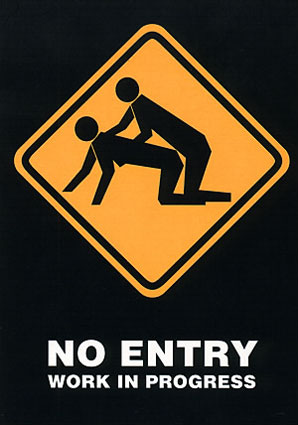Install the app
How to install the app on iOS
Follow along with the video below to see how to install our site as a web app on your home screen.

Note: This feature currently requires accessing the site using the built-in Safari browser.
-
New here? Register here now for access to all the forums, download game torrents, private messages, polls, Sportsbook, etc. Plus, stay connected and follow BP on Instagram @buckeyeplanet and Facebook.
You are using an out of date browser. It may not display this or other websites correctly.
You should upgrade or use an alternative browser.
You should upgrade or use an alternative browser.
Random pictures of the day
- Thread starter daddyphatsacs
- Start date
This would make an AWESOME tat!
...until you woke up the next morning in a strange place with a pounding headache...

Upvote
0
Taosman
Your Cousin In New Mexxico
<TABLE cellSpacing=0 cellPadding=0 border=0><TBODY><TR><TD vAlign=center align=left width=168 height=120>

 </TD><TD vAlign=top align=left width=355>The World’s Smallest Fountain Pen
</TD><TD vAlign=top align=left width=355>The World’s Smallest Fountain Pen

[FONT=Verdana, Helvetica, sans-serif]By Bjorn Carey
LiveScience Staff Writer
[/FONT][FONT=arial,helvetica]posted: 06 October 2005
08:38 am ET[/FONT]
</TD></TR></TBODY></TABLE><TABLE cellSpacing=0 cellPadding=0 border=0><TBODY><TR><TD width=19>
 </TD><TD>
</TD><TD>
<STYLE type=text/css><!--.style1 { font-family: Arial, Helvetica, sans-serif; font-size: 12px;}--></STYLE>Researchers have created the world's smallest fountain pen with a tip so tiny it can draw lines a hundred times thinner than a red blood cell.
Called the "nanonfountain probe," it can paint lines as thin as 40 nanometers and has its own reservoir to hold various types of inks, including pigments for painting patterns and organic materials for designing sensors.
<TABLE cellSpacing=0 cellPadding=3 width=150 align=right border=0><TBODY><TR><TD><TABLE cellSpacing=0 borderColorDark=#ffffff cellPadding=1 width="100%" bgColor=#000000 border=0><TBODY><TR><TD><TABLE cellSpacing=0 cellPadding=4 width="100%" border=0 vspace="0"><TBODY><TR><TD bgColor=#000000>
</TD></TR><TR><TD bgColor=#ffffff>
</TD></TR><TR><TD bgColor=#ffffff></TD></TR></TBODY></TABLE></TD></TR></TBODY></TABLE></TD></TR></TBODY></TABLE>Existing nano-pens use the same type of inks, but cannot hold an ink supply and must be dipped into the ink.
The new pen can be attached to the atomic-force microscope, which allows scientists to see nanoscale environments as well as draw on them. Possible uses for such a tiny pen, or an array of several of them, include crafting miniscule protein arrays and complex semiconductors.
[/FONT][/FONT]
</TD></TR></TBODY></TABLE>



[FONT=Verdana, Helvetica, sans-serif]By Bjorn Carey
LiveScience Staff Writer
[/FONT][FONT=arial,helvetica]posted: 06 October 2005
08:38 am ET[/FONT]
</TD></TR></TBODY></TABLE><TABLE cellSpacing=0 cellPadding=0 border=0><TBODY><TR><TD width=19>

<STYLE type=text/css><!--.style1 { font-family: Arial, Helvetica, sans-serif; font-size: 12px;}--></STYLE>Researchers have created the world's smallest fountain pen with a tip so tiny it can draw lines a hundred times thinner than a red blood cell.
Called the "nanonfountain probe," it can paint lines as thin as 40 nanometers and has its own reservoir to hold various types of inks, including pigments for painting patterns and organic materials for designing sensors.
<TABLE cellSpacing=0 cellPadding=3 width=150 align=right border=0><TBODY><TR><TD><TABLE cellSpacing=0 borderColorDark=#ffffff cellPadding=1 width="100%" bgColor=#000000 border=0><TBODY><TR><TD><TABLE cellSpacing=0 cellPadding=4 width="100%" border=0 vspace="0"><TBODY><TR><TD bgColor=#000000>
[FONT=Verdana, Arial, Helvetica, sans-serif]Small Stuff
</TD></TR><TR><TD bgColor=#ffffff>
http://javascript<b></b>:PopupDisplay('imagegallery','imgid=53&gid=6&index=0')
[FONT=Arial, Helvetica, sans-serif][FONT=Verdana, Arial, Helvetica, sans-serif]Micromachines[/FONT][/FONT]
[FONT=Verdana, Arial, Helvetica, sans-serif]Microscopic Art[/FONT]
[FONT=Arial, Helvetica, sans-serif][FONT=Verdana, Arial, Helvetica, sans-serif]Micromachines[/FONT][/FONT]
[FONT=Verdana, Arial, Helvetica, sans-serif]Microscopic Art[/FONT]
</TD></TR><TR><TD bgColor=#ffffff></TD></TR></TBODY></TABLE></TD></TR></TBODY></TABLE></TD></TR></TBODY></TABLE>Existing nano-pens use the same type of inks, but cannot hold an ink supply and must be dipped into the ink.
The new pen can be attached to the atomic-force microscope, which allows scientists to see nanoscale environments as well as draw on them. Possible uses for such a tiny pen, or an array of several of them, include crafting miniscule protein arrays and complex semiconductors.
[/FONT][/FONT]
</TD></TR></TBODY></TABLE>
Upvote
0















